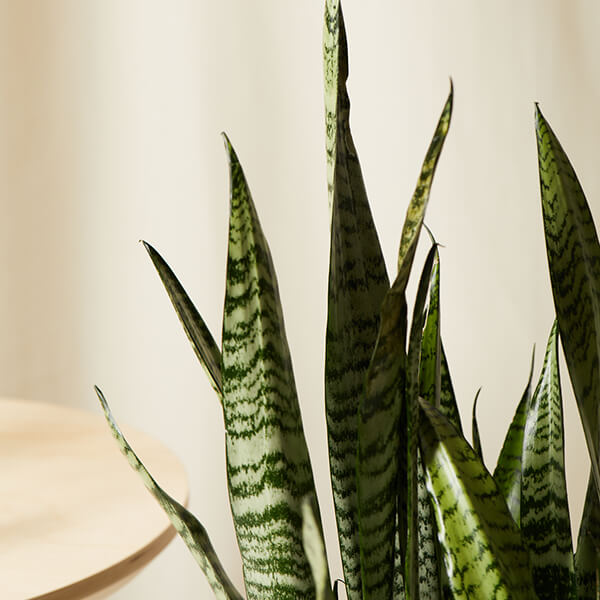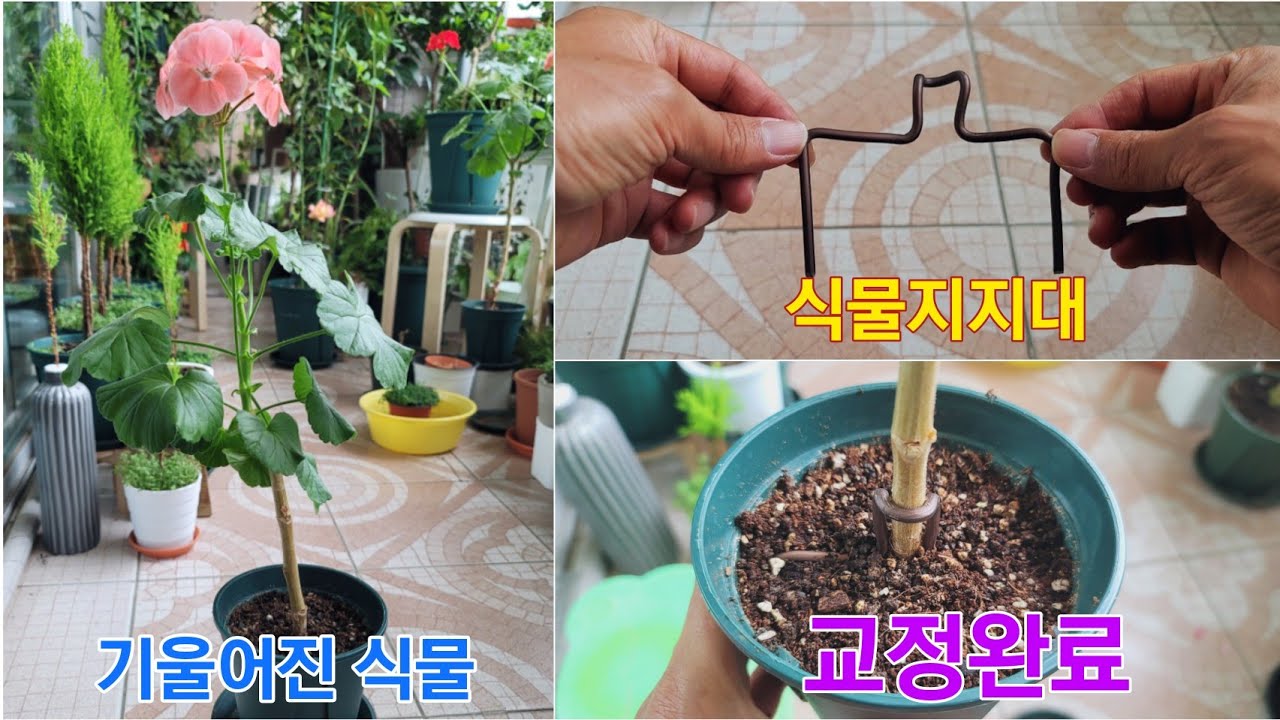It’s common for houseplants to start leaning or become lopsided as they grow. While it might look a little odd, a leaning plant is usually nothing to worry about. The cause is often something simple that can be easily fixed with a few adjustments to your plant care routine.
Common Causes of a Leaning Plant
There are three main reasons why indoor plants can start to tilt or bend to one side:
Lack of Light
The most common cause of a lopsided plant is that it’s reaching for light. Plants naturally grow toward sunlight to power photosynthesis and support new growth. If a plant isn’t getting enough light from one direction, it will start leaning and stretching toward the nearest light source. This disrupts the plant’s natural growth pattern and causes it to become uneven on one side.
The solution is to rotate your plant regularly so it receives equal light exposure on all sides. You may also need to move it closer to a window or supplement with a grow light. Getting adequate sunlight from multiple directions will encourage even upright growth.
Inadequate Support
As a houseplant grows taller and gains size its stems can become weak and floppy. The plant may not be able to support itself upright anymore without some assistance. The stems and leaves will start to droop and bend to the side.
Adding a plant stake, trellis, or moss pole gives leaning stems something sturdy to cling to and grow upward against. You can also prune back heavy top growth to reduce the weight and pressure on delicate stems. Providing physical support helps prevent collapse and keeps plants growing straight.
Rootbound
If the roots don’t have enough room to spread out, they can tangle together and essentially strangle the plant. Restricted roots limit access to water and nutrients. Without resources to support new growth, the plant becomes lopsided and leans over the edge of the pot.
Repotting into a larger container allows the roots space to grow freely. This stimulates healthier development above ground and redistributes the plant’s weight evenly. The new soil also provides fresh nutrients to aid recovery.
How to Straighten a Leaning Plant
Once you address the underlying issue, here are some tips to help straighten up a lopsided plant:
-
Gradually rotate the plant so the lean is redirected toward the light source. The plant will right itself as it grows toward the light.
-
Stake heavy stems and tie them loosely upright until they can support themselves. Remove stakes once stems are stronger.
-
Prune back heavy top growth to reduce the weight pulling the plant to one side.
-
For rootbound plants, loosen tangled roots and repot in a larger container. Firm down fresh soil to anchor it.
-
Keep the plant well-watered to strengthen cells and stems as it recovers. Drought stress further weakens growth.
-
Use your fingers to gently reshape bent stems and leaves back into their natural position. Avoid damaging fragile growth.
When to Worry About a Leaning Plant
While a bit of leaning is normal, watch for these signs that indicate a more serious underlying problem:
-
The plant is leaning despite adequate light and support.
-
Leaves are yellowing, wilting, or dropping excessively.
-
Stems rapidly become soft and collapse under the plant’s weight.
-
Leaning worsens dramatically in just a few days.
-
You notice signs of pests, disease, or root rot.
If correcting care issues doesn’t help straighten the plant, the cause could be a root, stem, or vascular disease. Severe insect infestations can also distort growth. These problems require diagnosis and specialized treatment to resolve.
Maintaining a Healthy, Upright Growth Habit
With the right growing conditions and care, you can keep your plants growing upright and looking their best:
-
Turn the plant frequently to ensure even light exposure.
-
Stake floppy stems and prune back heavy top growth.
-
Repot in a larger container to allow roots to spread.
-
Water thoroughly when the top several inches of soil become dry.
-
Feed with a balanced fertilizer to promote healthy stems and leaves.
-
Monitor for pests and treat infestations immediately to prevent lasting damage.
-
As plants grow, adjust support and pruning techniques to encourage proper shaping.
With a little attentive care, a leaning plant can be straightened out and restored to its natural, upright form. Pay close attention to your plant’s growth habits and make adjustments as needed to keep it looking full, healthy, and standing tall.
Does your Sansevieria look like it is leaning or falling over to one side? This might be happening due to a few different factors. Here are some common causes of why a snake plant begins to lean.

Underwatering
People say that snake plants are hard to kill. Their leaves are semi-succulent, so they don’t need much water. Long periods of dry weather, on the other hand, can stress your plant and make its leaves soft and floppy, making it more likely to fall over. It’s important to remember that the roots can start to die back if the plant is dry for too long.
Overwatering
The same time every day is when many of us water all of our indoor plants because we love our routine. But this approach can lead to watering certain plants too often. If you give your snake plant too much water, the leaves may rot at the base, which will make it lean and droop to one side. Water only when the soil is 100% dry, from the top to the bottom of the pot. Always check the soil before watering to make sure it needs it. Thoroughly water until you see it absorb into the soil and eventually flow out of the drainage hole. Discard any excess water that accumulates in the saucer.
Lack of Fertilizer
If you’re giving your snake plant plenty of water and it’s still leaning over, it may need some extra nutrients. The plant needs more than just water and sunlight. It also needs nutrients like phosphorus, nitrogen, and potassium. It’s a good idea to feed your snake plant once in the spring and once in the summer.
Lack of Light
A lean in your sansevieria might be its way of stretching to get closer to its light source. Sansevierias can handle low light, but they do best in high light. To fix this, move the plant closer to a window and turn it over once a month.
How to set up your Monstera for success
FAQ
How to straighten a plant that is leaning?
How do you get a plant to stand up straight?
Why do plants bend on one side?
Why is my plant falling to the side?
How do you move a leaning plant?
Simply moving the leaning plant closer to the window will ensure it has access to ample light. Start by turning the plant’s leaning side away from the light to let it ‘level out.’ This will return it to a neutral position over the next few days.
What is the cause if a plant is leaning sideways?
A lack of sunlight is one of the telltale signs if a plant is leaning sideways. Without sunlight, plants are sure to shrivel up and die. Some plants may only require a little bit of sun, but they need it nonetheless.
Why is my plant leaning to one side?
If you’ve ever noticed your plant leaning to one side, you’re not alone. This is a common problem that can be caused by a variety of factors, from improper watering to too much sunlight. But don’t worry, there are usually simple solutions to get your plant back to standing upright.
How to fix a plant that is growing sideways?
To fix a sideways-growing plant, proper supports should be put in place for it to anchor. Support mechanisms such as stakes and moss poles provide an easy alternative for climbing plants. Repotting will work for most other plants with poor soil quality.
- The Ultimate Guide to Growing Strawberries in Raised Beds - August 8, 2025
- No-Dig Garden Beds: The Easiest Way to Grow a Beautiful Garden - August 6, 2025
- How to Protect and Preserve Wood for Raised Garden Beds - August 6, 2025

